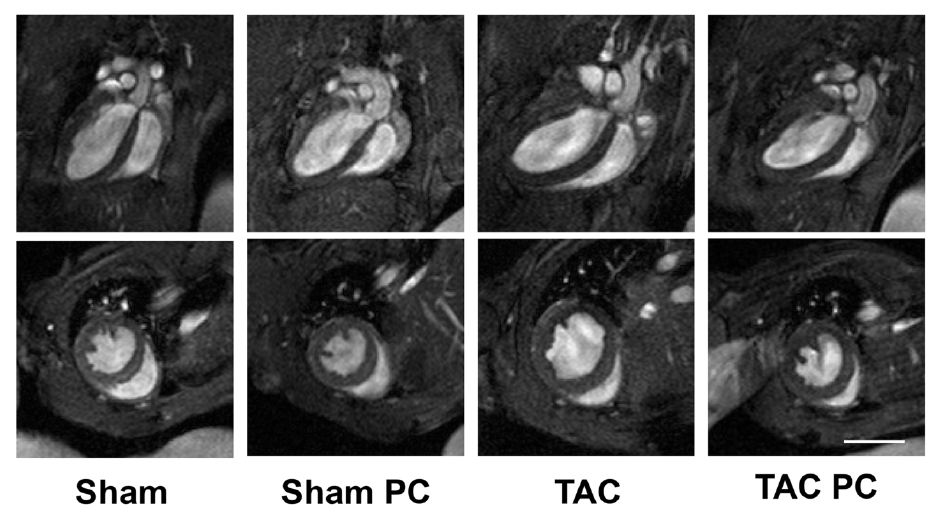Beneficial effects of paricalcitol on cardiac dysfunction and remodelling in a model of established heart failure

| AUTHORS | |
| JOURNAL | British Journal of Pharmacology Vol 177(14), 3273-3290 |
| ABSTRACT |
Background and PurposeThe synthetic vitamin D3 analogue paricalcitol acts as a selective activator of the vitamin D receptor (VDR). While there is evidence for cardioprotective effects of paricalcitol associated with the VDR pathway, less information is available about the structural and functional cardiac effects of paricalcitol on established heart failure (HF) and particularly its effects on associated electrophysiological or Ca2+ handling remodelling. Experimental ApproachWe used a murine model of transverse aortic constriction (TAC) to study the effect of paricalcitol on established HF. Treatment was initiated 4 weeks after surgery over five consecutive weeks, and mice were sacrificed 9 weeks after surgery. Cardiac MRI (CMRI) was performed 4 and 9 weeks after surgery. Hearts were used for biochemical and histological studies and to isolate ventricular myocytes for electrophysiological and calcium imaging studies.
Key ResultsCMRI analysis revealed that, compared with vehicle, paricalcitol treatment prevented the progression of ventricular dilation and hypertrophy after TAC and halted the corresponding decline in ejection fraction. These beneficial effects were related to the attenuation of intracellular Ca2+ mishandling remodelling, antifibrotic and antihypertrophic effects and potentially antiarrhythmic effects by preventing the reduction of K+ current density and the long QT, JT and TpTe intervals observed in HF animals. Conclusion and ImplicationsThe results suggest that paricalcitol treatment in established HF hampers disease progression and improves adverse electrophysiological and Ca2+ handling remodelling, attenuating the vulnerability to HF‐associated ventricular arrhythmias. Paricalcitol may emerge as a potential therapeutic option in the treatment of HF. |
| LINK | here |



